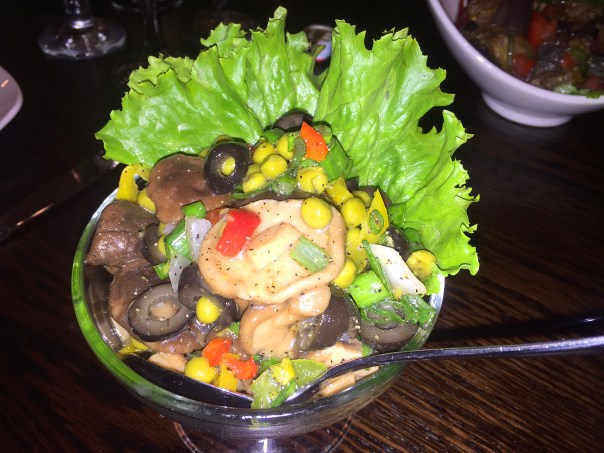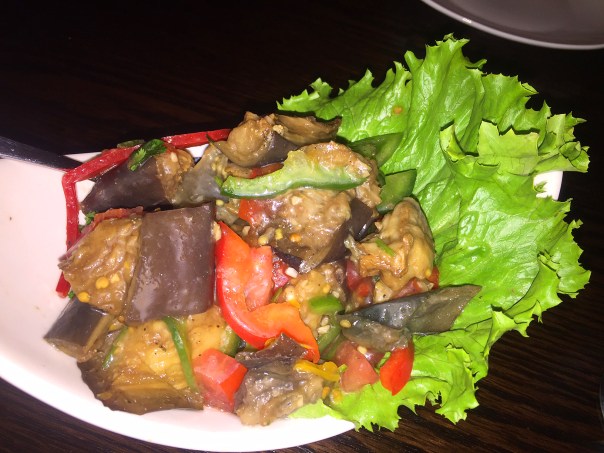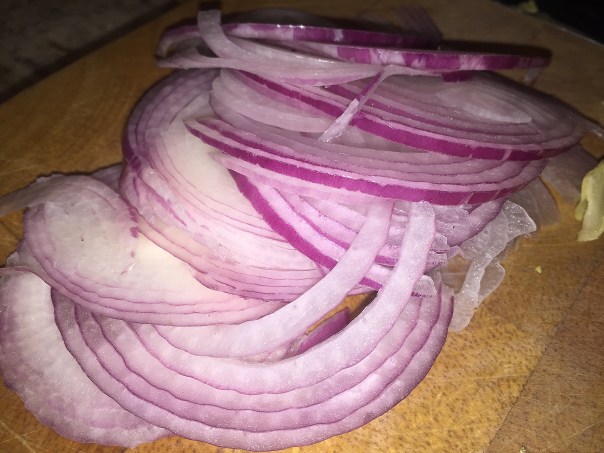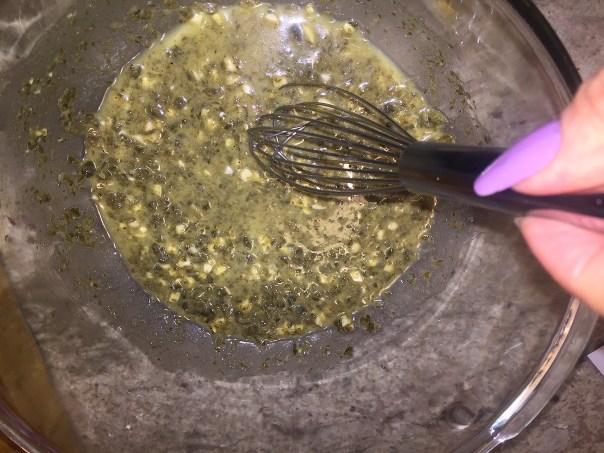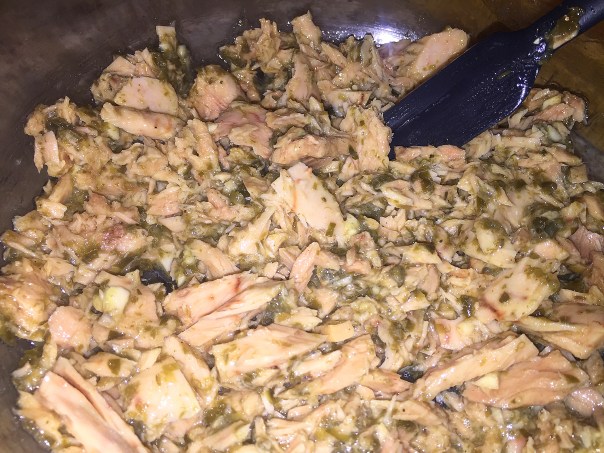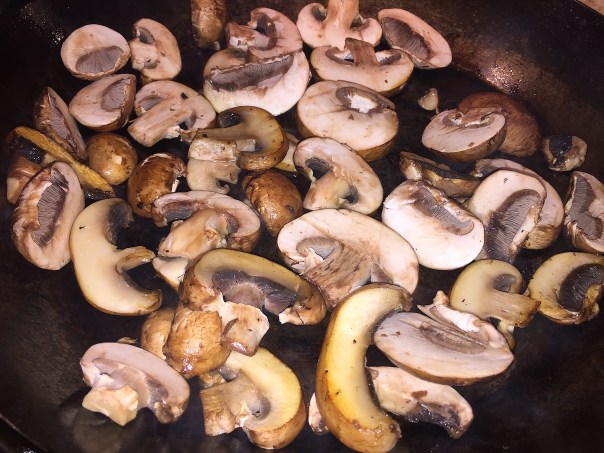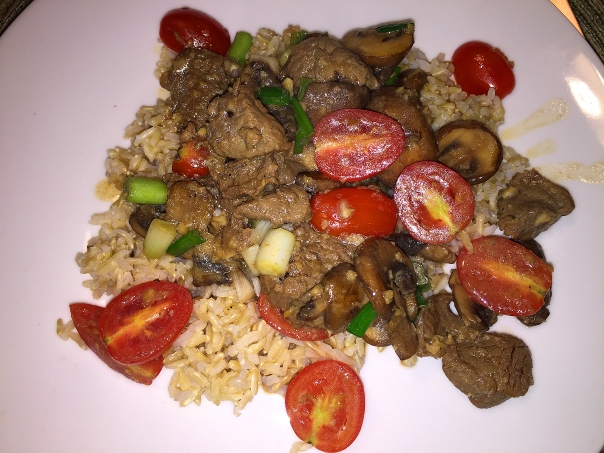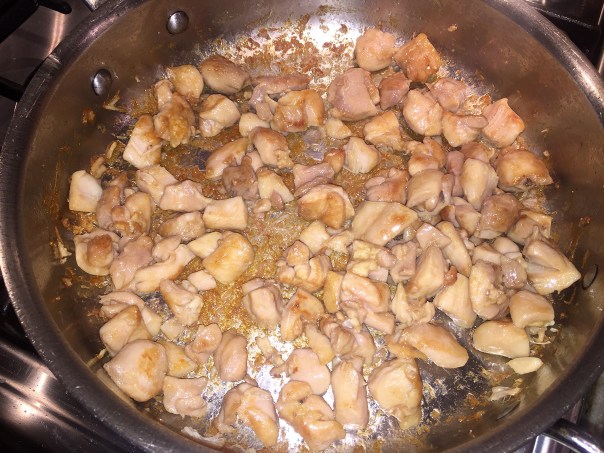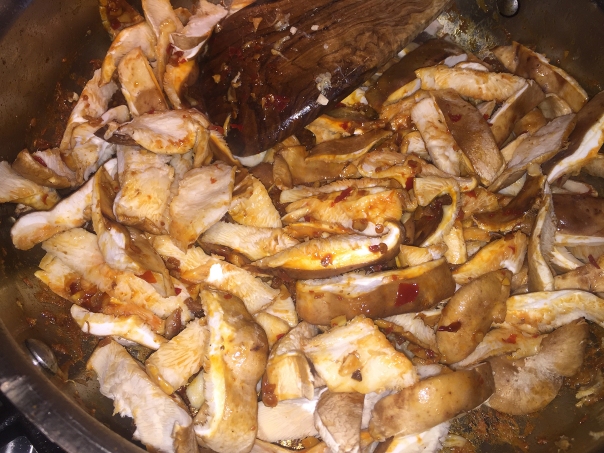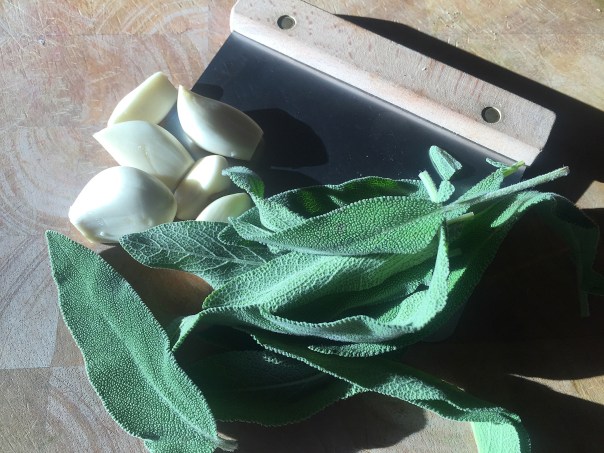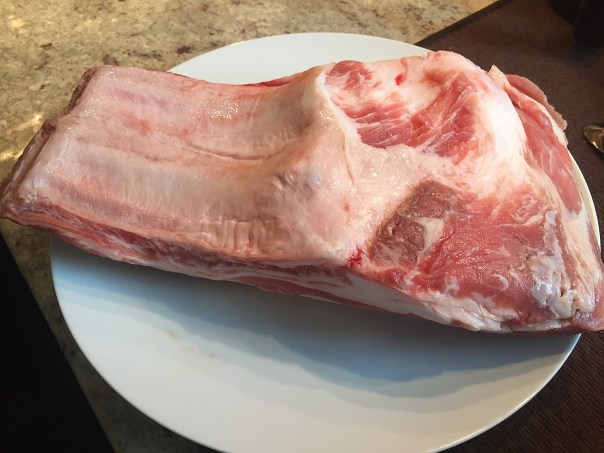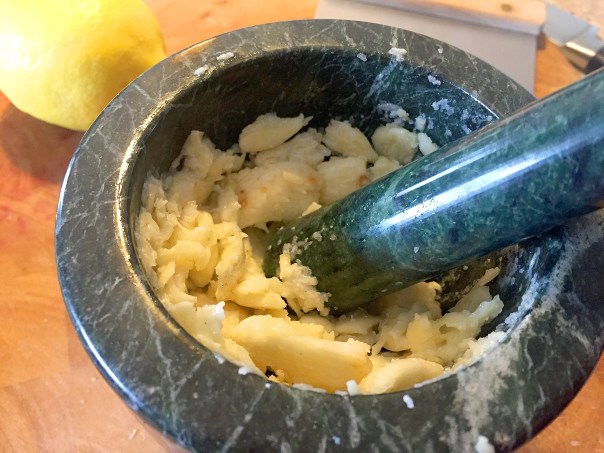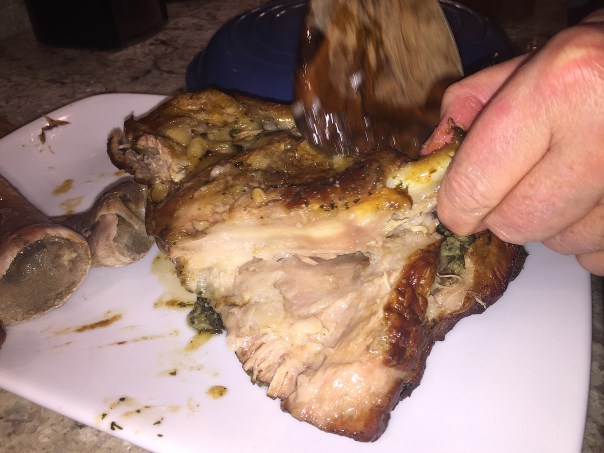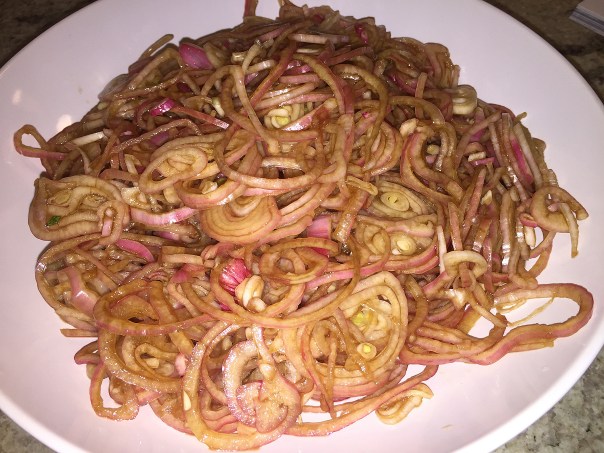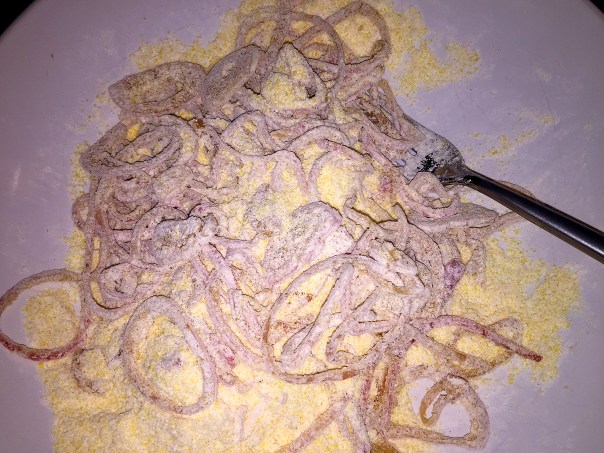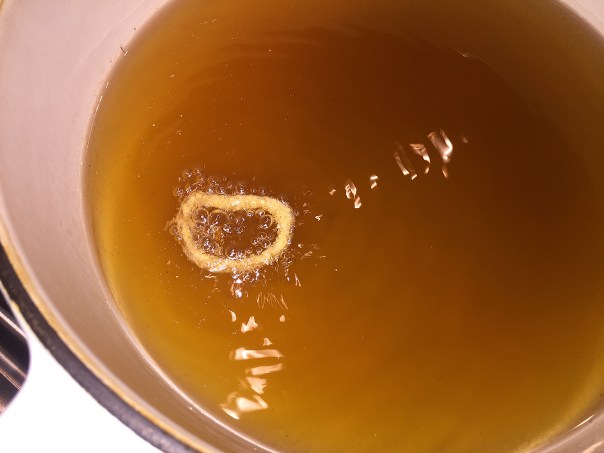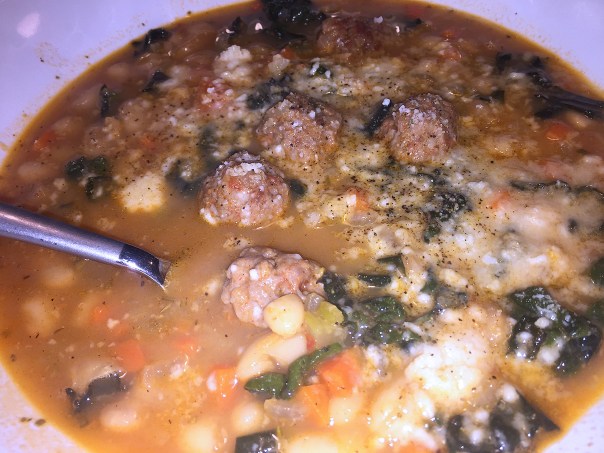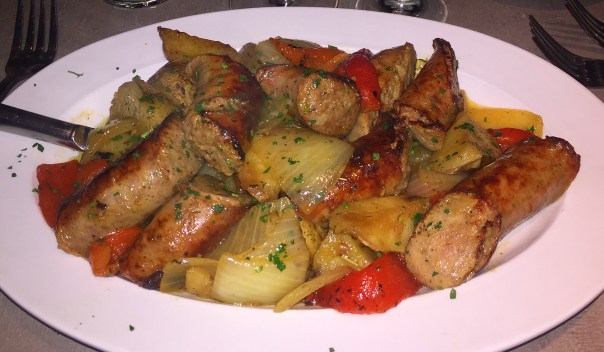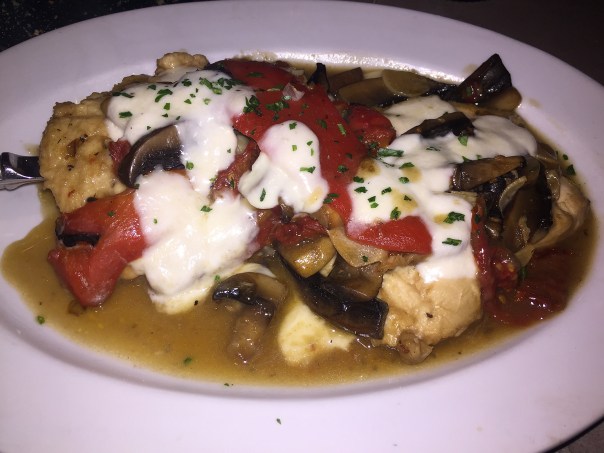Ever get to the end of the week and find a hodge podge of little bits of leftovers in the fridge? It certainly happens to us on occasion. What to do other than throw the food out, or into the compost pile? Make a dazzling frittata of course! We even have a special Spanish frittata platter which adds an artistic touch to the presentation.
The difference this time around was that Russ saw an episode on “Cocina con Bruno”—Cooking with Bruno, a Spanish cooking show he watches religiously— where Bruno flipped the frittata in a pan to cook the other side instead of finishing it in an oven. Sounded simple enough? Well it wasn’t. But we all know practice makes perfect, right?
But I digress… A well-made frittata is one of the world’s most perfect foods. It’s cheap, quick-cooking, and an efficient vehicle for leftovers—not to mention equally delicious at breakfast, lunch, and dinner. A frittata makes use of fully-cooked leftovers like last night’s roasted potatoes or this morning’s leftover bacon. And it tastes as good (and arguably better) cold or at room temperature as it does warm.

The first side is starting to set before it is either flipped in the pan, or finished in the oven.

Russ sprinkles on some grated parmesan before the flip.
If you’re starting from scratch, it’s best to fully cook any addition that might release moisture into the eggs—mushrooms, tomatoes, and summer squash or zucchini are common “wet” culprits than can water down your eggs. Sauté them separately.
This also holds true for aromatics, like onions, and sturdy veggies, like raw potatoes. They won’t get much more tender once you add the beaten eggs. Don’t be afraid of getting a little color on the vegetables: That’s what makes them so delicious!
Frittatas are easy to make, but that doesn’t mean you can throw caution to the wind and guess at the proportions. For every dozen eggs you use, some experts say you’ll need a half-cup of dairy, i.e. six-egg frittatas get a quarter-cup. Want to go smaller than that? Don’t bother. The beauty of a frittata is that it serves a crowd and keeps well. Russ doesn’t use dairy in every case, and this was one of those times.
A good frittata should have the texture of custard: trembling and barely set. You may want a deep golden-brown top, but the reality of it is, when the crust is golden, the interior is over-baked. If you must have a tanned top, try sprinkling cheese over it in the last few minutes of cooking time (if cooking in the oven.)
Frittata is an egg-based Italian dish similar to an omelette or crustless quiche, enriched with additional ingredients such as meats, cheeses, vegetables or pasta. The word frittata is Italian and roughly translates to “fried”
I found this ideal infographic by June Kim which might help you in deciding (although the specs may differ somewhat) how much of what to throw in, and how long to cook. That is if you don’t do the flip method!

Our ingredients for this frittata:
- 6 eggs, slightly beaten (we only had 5 on hand)
- 2 oz. pancetta, cut in 1/4” dice
- 1/2 yellow pepper, 1/4” dice
- 1/2 yellow onion, 1/4” dice
- 3/4 cup grape tomatoes, cut in vertical slices
- 2 Tbsp. finely minced fresh herbs: parsley, sage, chives
- 1/4 cup (at most) parmesan cheese
- 1 Tbsp. olive oil
- Salt and pepper to taste
- 1/4 cup dairy (if using)
The whole point of a frittata is that you can make it anytime, with almost anything. Just keep these few tips in mind:
SIZE IT RIGHT
If baking entirely in the oven, any 2-quart baking dish works well for this frittata. For a classic look, cook your frittata in a 12″ cast-iron skillet, then finish in the oven. Larger dimensions will work, too, but will yield shallower frittatas and require shorter cooking times.
GO EASY WITH THE BEATING
Beat the eggs only enough to blend the whites and yolks. Overbeating will cause the frittata to poof in the oven, then fall into a denser layer when cooling.
PRE-COOK YOUR MIX-INS
While just about anything can be stirred into the egg base, you should stick to ingredients that are already cooked. For anything with excess moisture, such as sautéed greens, be sure to squeeze out any liquid first.

A little slice of yummy goodness any time of day.
The Mexi-Tattata
The following weekend Russ made another frittata, this time incorporating leftover baby fingerling potato slices, red pepper, onion, and heavy cream. However, he also wanted to use some cilantro and a jalapeno that were getting past their prime. Plus we had just purchased a hunk of Habanero-Jalapeno Cheddar Cheese from the Newtown Farmer’s Market.

The veggies (potatoes, peppers and onion) are precooked to eliminate any moisture.

Some habanero-jalapeno cheddar cheese is grated into the egg and dairy mixture.
As a final touch to the newly christened “Mexi-Tattata,” he sprinkled in about a 1/4 teaspoon of pimenton to the egg mixture. And instead of trying the flip-method again, he finished it under the broiler. Excellente!











